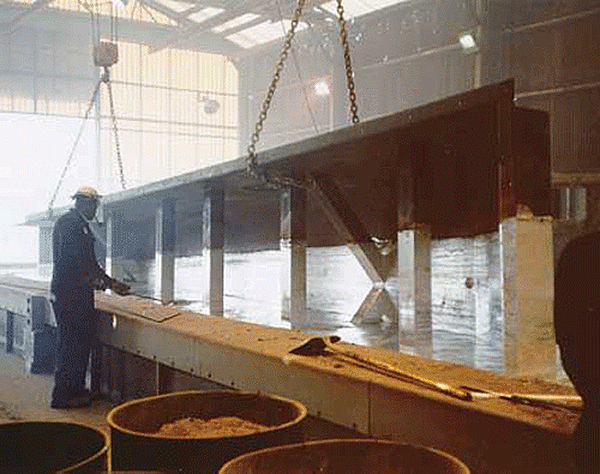Double Dip - Greater Thickness
Sometimes we get a direct order from a customer to "double dip" an item. What really happens when we double dip an item?

"I want an extra heavy coating so I want you to dip this item twice." There are still a significant number of people who believe this is an acceptable method for thicker coatings. When hot dip galvanizing an article, a series of zinc-iron an alloy layer develops. These layers are distinct in character and are the results of diffusion-reaction involving molten zinc and steel/iron. This occurs when the steel reaches the temperature of the molten zinc. For steel with silicon contents below 0.05 percent, the development of a high quality galvanized coating is, for all practical purposes, complete within a few minutes of the galvanizing temperature. (Massive items, of course, require more time to heat up to the galvanizing temperature.) When an item is withdrawn from the molten zinc, some bath zinc is carried out with it.
This forms the free zinc surface layer on the item. If the item is immersed into the molten zinc again, the free zinc layer will remelt (but not the all of the layers since their melting point is greater than 850 degrees F). From this point, the galvanizing process proceeds as if the article were never withdrawn the first time. The galvanized coating at the end of the second dip, assuming equal times of immersion, is only slightly thicker than the original coating. It also consists of a higher proportion of alloy and has a tendency for increased brittleness. In the case of silicon-containing steels, the diffusion reaction continues on the second dip as if the items were never removed; however, since silicon steels are more reactive to molten zinc, the coating builds up linearly with time. Again, the thicker coatings have a tendency for increased brittleness and the end product is no different than if a long single immersion had been used.
© 2025 American Galvanizers Association. The material provided herein has been developed to provide accurate and authoritative information about after-fabrication hot-dip galvanized steel. This material provides general information only and is not intended as a substitute for competent professional examination and verification as to suitability and applicability. The information provided herein is not intended as a representation or warranty on the part of the AGA. Anyone making use of this information assumes all liability arising from such use.

